1. Learning Theories & Instructional Design Models (Pedagogical)
1.1. Behaviourism
1.1.1. Instructivist Instructional Design
1.1.1.1. Gagne's Events of Instruction
1.1.1.1.1. 1. Gain attention
1.1.1.1.2. 2. Inform learner of the objective
1.1.1.1.3. 3. Stimulate recall of prior learning
1.1.1.1.4. 4. Present stimulus material
1.1.1.1.5. 5. Provide learning guidance
1.1.1.1.6. 6. Elicit performance
1.1.1.1.7. 7. Provide feedback
1.1.1.1.8. 8. Assess performance
1.1.1.1.9. 9. Promote retention and transfer
1.1.1.2. 4C Model (Van Merrienboer) (Inductivist)
1.1.1.2.1. 1. Learning tasks
1.1.1.2.2. 2. Part-task practice
1.1.1.2.3. 3. Supportive information
1.1.1.2.4. 4. Just-in-time information
1.1.1.2.5. Van Merrienboer has argued against the effectiveness of constructivist learning approaches (pls see LINK here)
1.1.1.3. CISCO RLO
1.1.1.3.1. Can be mapped to Gagne's Events of Instruction. (Pls see LINK here)
1.1.1.3.2. Often used for corporate settings
1.2. Cognitivism
1.3. Constructivism
1.3.1. Constructivist Instructional Design
1.3.1.1. Multimedia Learning (Mayer) (Cognitive constructivist)
1.3.1.1.1. a. Multimedia principle: Use both words and images to stimulate active cognitive processing
1.3.1.1.2. b. Contiguity principle: Integrate words and images (spacially close and temporally concurrent) (avoid cognitive overload)
1.3.1.1.3. c. Modality principle: Use audio narration instead of text
1.3.1.1.4. d. Redundancy principle: Use audio text OR visual text on a screen, not both (avoid cognitive overload)
1.3.1.1.5. e. Coherence principle: Less is more, only use words/images/audio that are necessary to achieve the learning outcome
1.3.1.1.6. f. Personalization principle: Use conversational, not formal, language
1.3.1.1.7. g/h. Segmenting and Pretraining principles (for complex material)
1.3.1.2. Designing for concept learning through computer supported collaborative learning (CSCL) (Bonk and Cunningham)
1.3.1.2.1. Learner-centered instruction
1.3.1.2.2. Constructivism
1.3.1.2.3. Sociocultural theory and principles for CSCL
1.3.1.3. Problem-Based Learning (Savery and Duffy, 1995)
1.3.1.3.1. Premises
1.3.1.3.2. Instructional Principles
1.3.1.3.3. Problem-Based Learning Model (based on Barrows, 1985,1992)
1.3.1.4. Mind tools
1.3.1.4.1. ICT tools that help learners to organize and extend their thinking as well as to build knowledge together
1.3.1.5. Situated Learning
1.3.1.5.1. Authentic, ill-defined activities
1.3.1.5.2. Authentic context
1.3.1.5.3. Access to observing and interacting with experts
1.3.1.5.4. Context provides multiple perspectives
1.3.1.5.5. Collaborative knowledge construction
1.3.1.5.6. Opportunities for reflection
1.3.1.5.7. Opportunities for articulation
1.3.1.5.8. Complex, open-ended context for scaffolding
1.3.1.5.9. Authentic assessment integrated with learning tasks
1.3.1.6. Case-based learning
1.3.1.7. Inquiry-based learning
1.3.1.8. Role play and simulations
1.3.1.9. Task-based learning (vs. Resource-based, vs. Teacher-centered)
1.3.1.9.1. Supports active knowledge construction
2. History of Learning Design and Technology
2.1. Instructional media
2.1.1. With every technological innovation, excitement that media will change instruction
2.1.2. Up to the 90s, media had not really changed education
2.2. Instructional design
2.2.1. Roles of instructional designers have expanded and become more diverse
2.2.2. Instructional design has been particularly well-developed in industry, military sectors
2.2.3. Instructional design has become more focused on constructivism and interaction
2.2.3.1. Due to development of learning theories
2.2.3.2. Due to development of media
3. Learning Technology Product Development Processes
3.1. Instructional Design Models (Stages of design process) (Pls see NOTE and LINK here)
3.1.1. ADDIE model
3.1.1.1. Analysis
3.1.1.2. Design
3.1.1.3. Development
3.1.1.4. Implementation
3.1.1.5. Evaluation
3.1.2. Examples of some other ID process models
3.1.2.1. Oval model by Kemp
3.1.2.2. Linear model by Dick and Carey
3.1.2.3. Spiral model by Romiszowski
3.1.2.4. Rapid prototyping model by Tripp and Bichelmeyer
3.1.2.5. Top-to-bottom model by Braden
3.2. Roles
3.2.1. Project Manager
3.2.2. Instructional Designer
3.2.3. Interface Designer
3.2.4. Multimedia Designer
3.2.5. Programmer
3.2.6. Quality Assurance Tester
3.2.7. Others (media production roles)
4. Web 2.0 affordances for Instructional Design
4.1. Web tools
4.1.1. Blogs
4.1.1.1. A publishing platform that is easily shared and does not require much technical skill
4.1.2. Wikis
4.1.2.1. Collective publishing to create web-based information resource
4.1.3. Social bookmarking and social repositories
4.1.3.1. Share interests and discoveries with others
4.1.4. Social networking
4.1.4.1. Communicate with others in a shared space
4.1.5. Cloud computing
4.1.5.1. Computing from any device
4.1.6. RSS feeds and podcasting
4.1.6.1. Information is delivered as it becomes available
4.1.7. Mashups
4.1.7.1. Online content or tools can be combined with other content or tools to create content/a "mashed up" tool of distinct added value
4.1.8. Open source
4.1.8.1. Programmes can be modified to suit users
4.1.9. "Web as platform"
4.1.9.1. Various web-specific applications like YouTube
4.2. Issues
4.2.1. General affordances of Web 2.0
4.2.1.1. User control of information
4.2.1.2. User generated content
4.2.1.3. New forms of expression, creation and communication
4.2.1.4. Social/collective activities online without geographical limits
4.2.1.5. Web as a platform
4.2.1.6. Democratization of media
4.2.2. Web 2.0 is part of everyday life now, it needs to be addressed and used in education as well
4.2.3. What will be effect on education of ubiquitous Web 2.0 on various devices (incl. mobile)?
